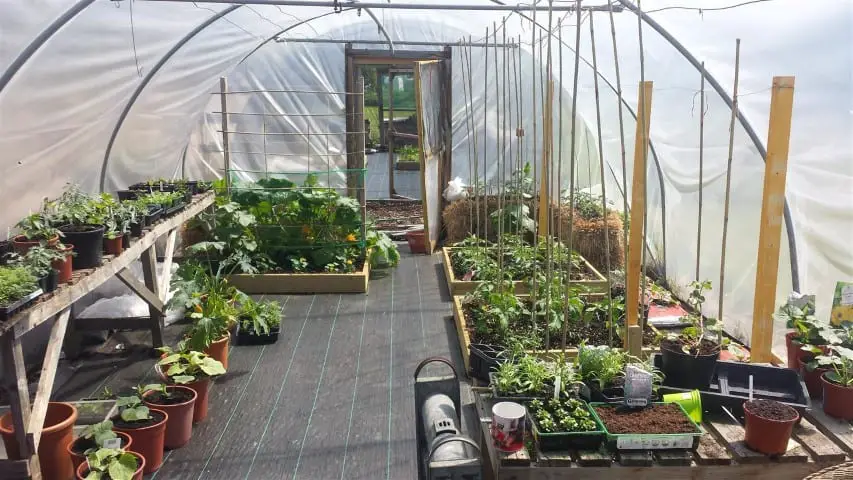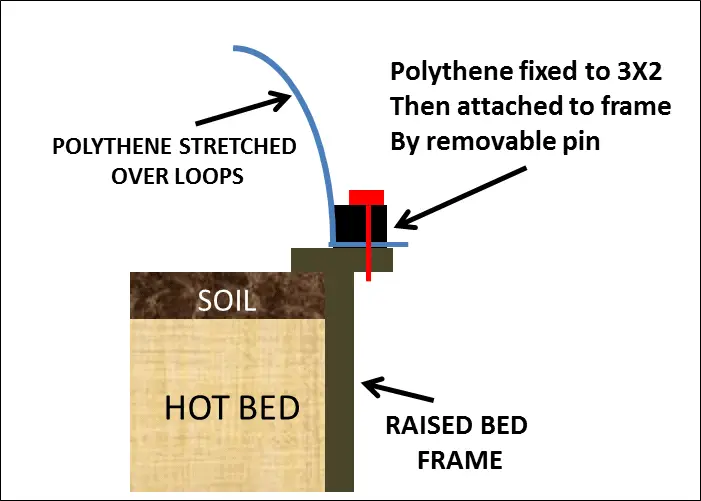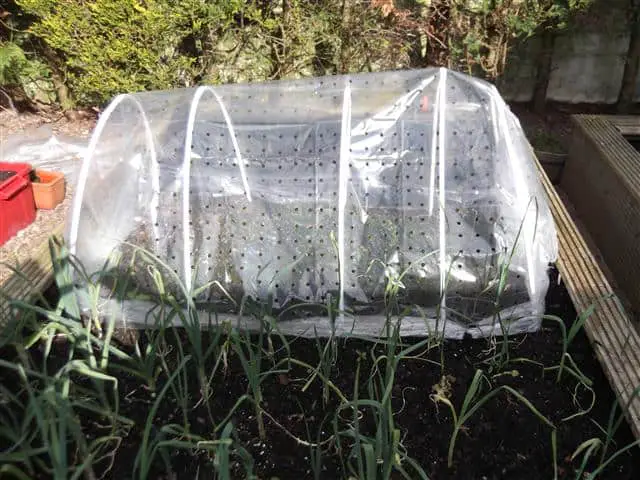
Growing vegetables in a hoop house (also called a polytunnel or hoop tunnel) is a real bonus for the average gardener for several reasons, not the least of which being that it pretty much frees them from the vagaries of the weather!
When it comes to the types of vegetables that you can grow in a hoop house then there is an almost endless list of candidates including of course the tomato plant (actually a fruit), peppers, cucumber, melon, pumpkin, eggplant, and squash throughout the summer season.
In the early (and late) season when the weather is cooler then carrots, parsnip, broccoli, kale, cabbage and beets can also be grown according to the relative temperatures – some of which are recorded in the charts below.
COOL SEASON VEGETABLES
| CROP | TEMPERATURE RANGE (F) | MIN TEMP (F) | NUMBER OF DAYS TO MATURITY APPROX |
| BEETS | 60-65f | 15-20f | 55-65 |
| BROCCOLI | 60-65f | 22-25f | 55-75 |
| CABBAGE | 60-65f | 10-15f | 70-120 |
| CARROTS | 60-65f | 12-15f | 55-90 |
| KALE | 60-65f | 15-20f | 50-60 |
| PARSNIP | 60-65f | 12-15f | 100-130 |
| SPINACH | 60-65f | 0-5f | 35-45 |
| SWISS CHARD | 60-65f | 10f | 50-60 |
HOT SEASON VEGETABLES
| CROP | TEMPERATURE RANGE (F) | MIN TEMP | DAYS TO MATURITY APPROX |
| CUCUMBER | 65-75f | 30f | 50-75 |
| EGGPLANT | 75-90f | 30f | 50-80 |
| MELON | 65-75f | 30f | 90-115 |
| PEPPERS | 70-80f | 30f | 65-80 |
| SUMMER SQUASH | 65-75f | 30f | 40-50 |
| TOMATO | 70-80f | 30f |
For the cooler season vegetables during the colder months particularly, the night-time and early morning temperatures can drop significantly so it is always advisable to have some garden fleece handy to throw over your plants at night.
This will protect them from damage from a cold snap or a mild frost.
Growing in raised beds or indeed straw bales in a hoop house further extends the growing season as these methods of gardening mean that the growing medium – either straw or compost – is warmer than ground soil.
This means that with a hoop house you can actually be growing vegetables whilst it is snowing outside in some cases.
If you have a small greenhouse heater working as well then that is particularly good for encouraging growth and protecting your plants against frost damage.
Other uses for a Hoop House
Other ways you can use a Hop House over the summer period is to cover the frame not in clear plastic, but in butterfly or insect mesh.
This means that you have a butterfly-free area to grow your cabbage and broccoli plants away from the ravages of the cabbage moth!
I am fortunate enough to have 2 – 30 foot Hoop Houses one of which is covered in polythene and the other with a 10mm butterfly mesh which is excellent from keeping away the great white cabbage butterfly, and is tall enough for me to walk around and freely attend the veggies.
Raised Bed Hoop House
Creating or building a smaller hoop house to cover a raised bed is a simple task, and only means adding a frame to your raised bed and creating hoops out of plumbers plastic pipe to insert into the frame.
This pipework is then covered with plastic or mesh according to your particular needs.

As an added extra you can hinge the frame along the back-side creating a ‘lid’ that you can open and close with ease to give you clear access to your veggies.
This simple addition can be added to your raised bed garden or square foot garden (another form of raised bed), and can extend your growing season in the same way that a full size hoop house can do.
In fact the advantage with a small hoop house is that it is much easier (and cheaper) to heat than a large size polytunnel.
The main disadvantage with the smaller version is that you cannot grow tall plants like vine tomatoes, although it might just be possible to grow bush tomatoes over the summer – even if it means lifting away the lid over the hot growing season.

Cost of building a hoop house
To build a full size hoop house is relatively cheap at around $2-$3 per square foot. This is compared to a regular greenhouse costing at least $4-$5 per square foot.
Maintaining a hoop house is also significantly cheaper as you have no glass to break! The most you will have to do with a hoop house is to tape-up tears that may occur from time to time with polythene repair tape.
On the ‘downside’ however, the lifespan of a hoop house is shorter than most greenhouses. Glass really does not deteriorate over time and the plastic or aluminium frame can last for several decades.
This compares to the lifespan of 6mil polythene covering which will last about 4-5 years.
You might also like…How to make a Hot Bed garden

